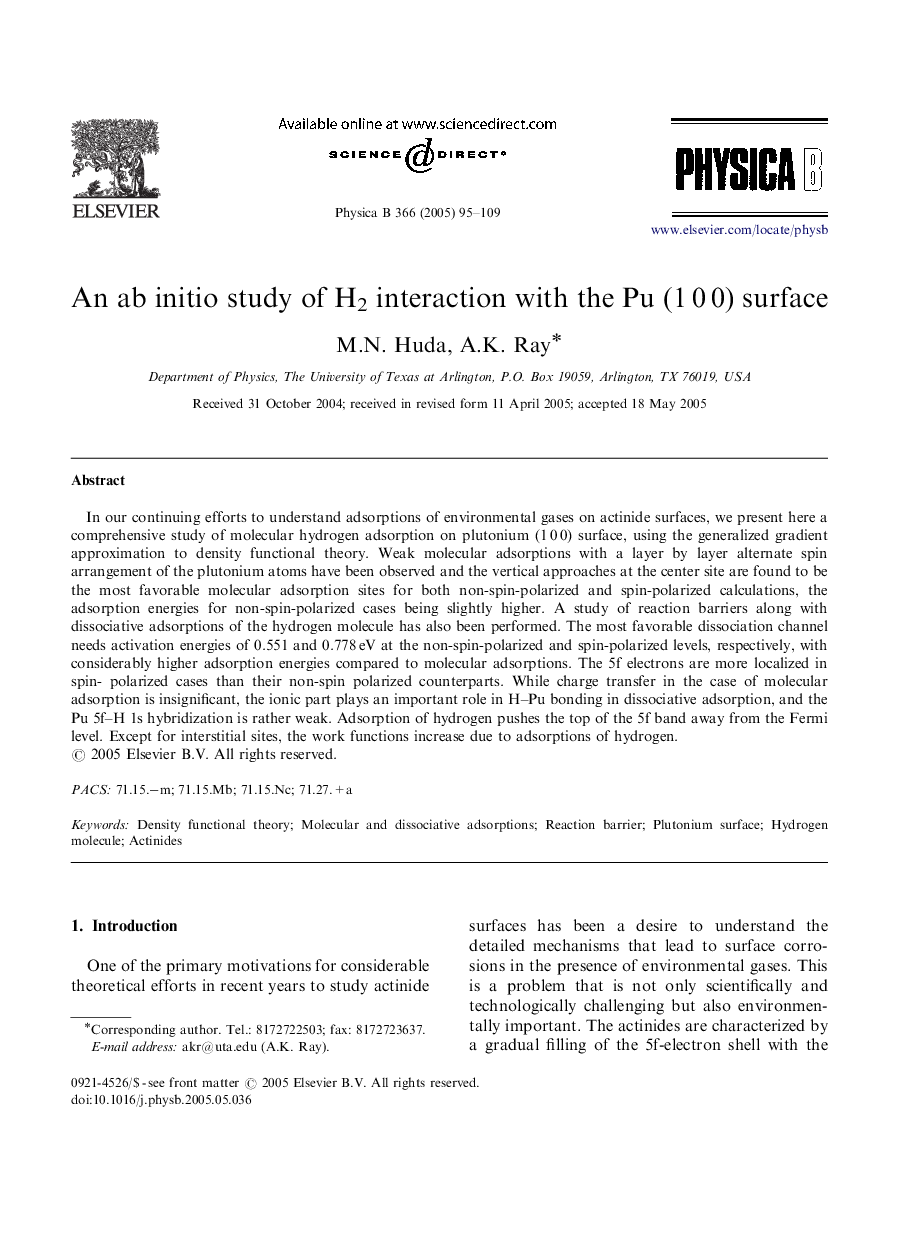| Article ID | Journal | Published Year | Pages | File Type |
|---|---|---|---|---|
| 9837473 | Physica B: Condensed Matter | 2005 | 15 Pages |
Abstract
In our continuing efforts to understand adsorptions of environmental gases on actinide surfaces, we present here a comprehensive study of molecular hydrogen adsorption on plutonium (1Â 0Â 0) surface, using the generalized gradient approximation to density functional theory. Weak molecular adsorptions with a layer by layer alternate spin arrangement of the plutonium atoms have been observed and the vertical approaches at the center site are found to be the most favorable molecular adsorption sites for both non-spin-polarized and spin-polarized calculations, the adsorption energies for non-spin-polarized cases being slightly higher. A study of reaction barriers along with dissociative adsorptions of the hydrogen molecule has also been performed. The most favorable dissociation channel needs activation energies of 0.551 and 0.778Â eV at the non-spin-polarized and spin-polarized levels, respectively, with considerably higher adsorption energies compared to molecular adsorptions. The 5f electrons are more localized in spin- polarized cases than their non-spin polarized counterparts. While charge transfer in the case of molecular adsorption is insignificant, the ionic part plays an important role in H-Pu bonding in dissociative adsorption, and the Pu 5f-H 1s hybridization is rather weak. Adsorption of hydrogen pushes the top of the 5f band away from the Fermi level. Except for interstitial sites, the work functions increase due to adsorptions of hydrogen.
Keywords
Related Topics
Physical Sciences and Engineering
Physics and Astronomy
Condensed Matter Physics
Authors
M.N. Huda, A.K. Ray,
